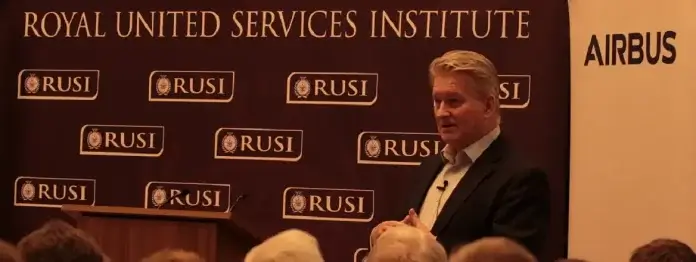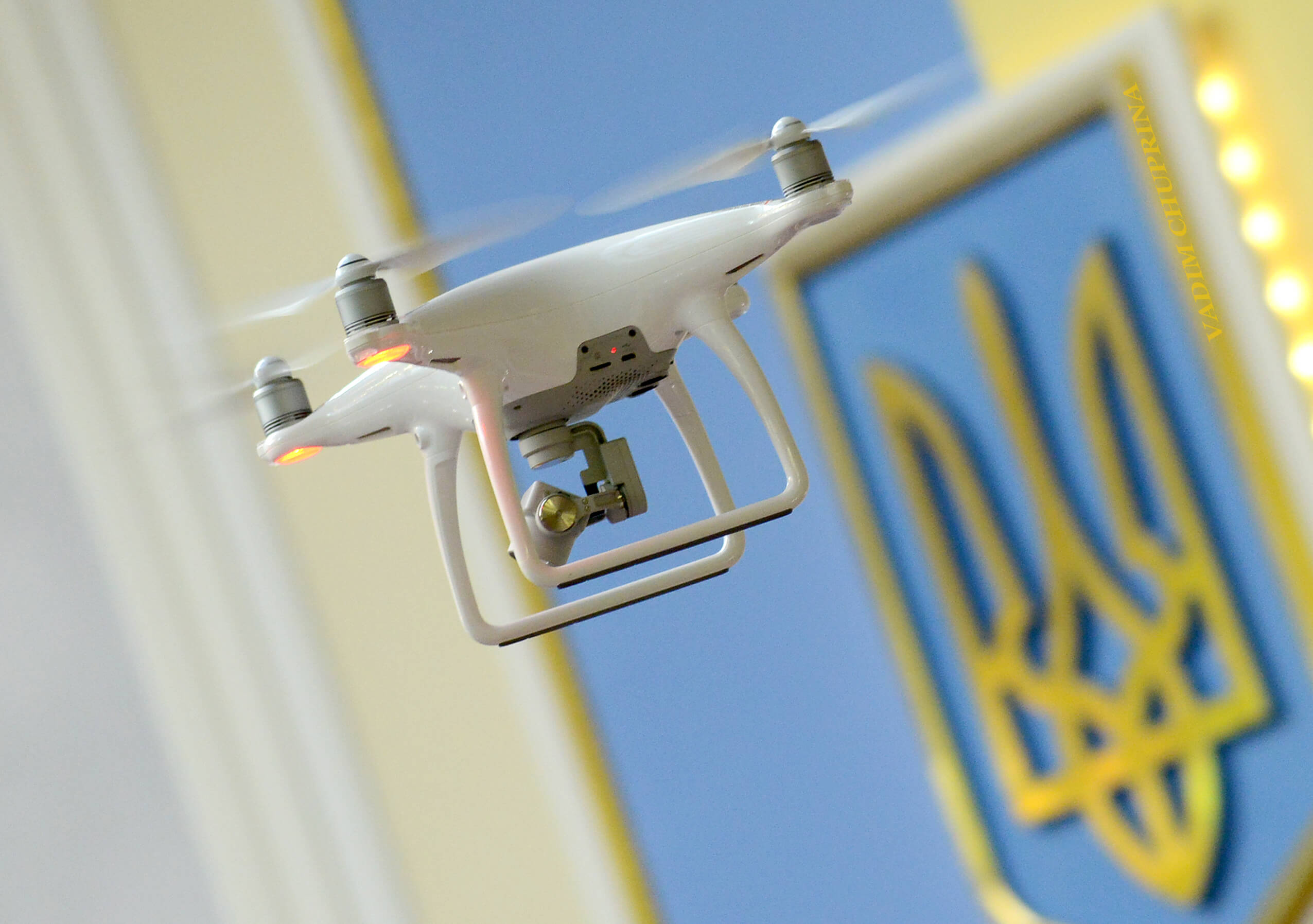
An innovative approach to radio communications promises to enhance the survivability of Ukrainian uninhabited aircraft in a conflict increasingly characterised by the widespread use of UAVs.
Lieutenant General Sir Jim Hockenhull, commander of the UK’s Strategic Command, gave a speech at the inaugural Royal United Service’s Institute’s (RUSI) Profession of Arms Series lecture on 15th February. Gen. Hockenhull discussed threats, challenges and opportunities in the cyber and electromagnetic domains. A full transcript of his speech can be found here.
Gen Hockenhull highlighted research performed by RUSI in mid-2023 which noted that Ukraine was losing around 10,000 Uninhabited Aerial Vehicles (UAV) per month in its ongoing war with Russia. The US involvement in the Vietnam War was associated with development of the helicopter as a military platform. The Ukraine War is increasingly associated with the UAV’s coming of age as a tactical capability.
These uninhabited aircraft are proving their worth for both sides as valuable Intelligence, Surveillance and Reconnaissance (ISR) platforms. UAVs deliver ordnance against hostile assets like troops, weapons, vehicles, sensors and bases. Explosive-laden kamikaze UAVs crash themselves into targets.
RF Reliance
Such is the UAV threat in Ukraine that both sides have worked hard to develop and deploy Counter Uninhabited Aerial Vehicle (CUAV) capabilities focused on kinetic and electronic attack. The latter directs jamming against the Radio Frequency (RF) links these aircraft depend on. UAVs use radio links to connect the aircraft to its pilot, and to share ISR data and information on the aircraft’s health. Global Navigation Satellite System (GNSS) receivers aid navigation with satellite-transmitted PNT (Position, Navigation and Timing) signals.
Jamming works to disrupt these RF links. Civilian-standard UAVs typically, but not exclusively, use frequencies of 2.4 gigahertz/GHz and 5.8GHz to connect the aircraft to its pilot. Frequencies of 1.1GHz to 1.6GHz are used for GNSS PNT signals. Russian land forces have deployed scores of Electronic Warfare (EW) systems at the tactical and operational level to attack and jam frequencies used by UAVs. Details of these systems can be found here. If a UAV loses its RF links it may either automatically return to its point-of-origin, or land in situ.
Given the jamming threat, it is little surprise that Ukraine is taking strenuous efforts to avoid the threat posed by Russian EW systems. Armada has learned that around 90 percent of all tactical Electronic Warfare (EW) in the Ukrainian theatre is targeting UAVs. Encrypting UAV RF links can help as the aircraft will ignore all signals not matching the encryption keys. Using inertial navigation systems, which do not need RF, are another option. Sometimes, Ukrainian troops will deliberately fly their UAVs using the same frequencies as those used by Russian uninhabited aircraft. This means that the Russians will jam their own UAVs if they try to electronically attack the Ukrainian aircraft. Another tactic is to launch around 20 UAVs, all of which are using different frequencies. This forces the Russians to divide their EW force to detect and target each frequency in the hope that insufficient electronic warfare assets exist in the UAVs locale. The logic is that at least one or two of the aircraft will complete their mission.
Local Innovation
Innovation is moving at breakneck speed in Ukraine, accelerated by the necessities of war, and ultimately the country’s survival. Colibri Defence Dynamics shared with Armada that it has developed an innovative radio system that could help Ukrainian UAVs outflank Russian jamming. While radio frequency hopping offers some resilience it is limited says Jack De Santis, the company’s founder. The problem with frequency hopping is that it usually occurs across a relatively narrow band: “The Russians simply jam the entire band.” Anecdotal evidence from Ukraine recently shared with your correspondent said that any RF system transmitting 500 hops-per-second is easily jammed by Russian EW cadres.
Mr. De Santis and his innovators have taken a different approach developing an RF system which can equip a UAV, but which provides several communications channels across a very wide bandwidth. Understandably, Mr. De Santis declines to share the bandwidth this system works across. He did mention that all the RF processing is enclosed in a single printed circuit board which can easily outfit a UAV. Each UAV thus equipped will have scores of channels it can use simultaneously for its RF links. “The Russians cannot jam all these links at the same time,” he argues.
The wider the jamming bandwidth an EW system must attack, the less power it can direct against each frequency and the shorter the range this jamming becomes, progressively reducing its effectiveness. An alternative is to try to deploy yet more tactical CUAV systems but this is easier said than done: “The more EW systems the Russians deploy at the front the easier it is for the Ukrainians to find them.” Moreover, these systems are expensive, complex to produce, require trained personnel and are lucrative targets. All factors restricting how many CUAV systems Russian land forces can deploy at any one time. “The Russians, or any other EW force for that matter, are unable to jam every frequency known to humankind at once, no matter how much they spread their power.”
Russian CUAV systems at the front may be able to jam or spoof some of a UAV’s links but not all of them. Let us suppose that the RF channel one of the UAVs is using to share ISR data is suddenly jammed. Software immediately moves the ISR feed to an unjammed channel. Suppose false PNT information is received on another channel. The software discards this information as it does not match the PNT data received on the GNSS link. Mr. De Santis and his team call their approach channel parallelisation.
Ukraine is moving innovation forward in the electromagnetic sector at breakneck speed as the conflict’s UAV dimension illustrates. This is helped in no small measure by an efficient ‘lessons learned’ approach. Mr. De Santis and other innovators can quickly understand what is happening in the spectrum and react accordingly.

by Dr. Thomas Withington













